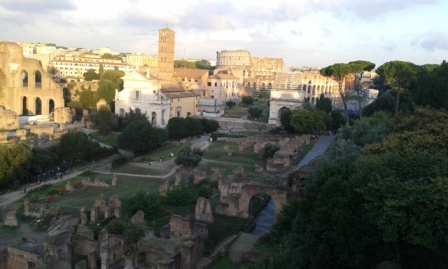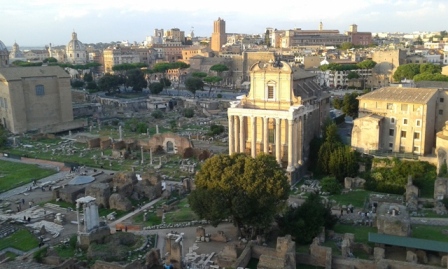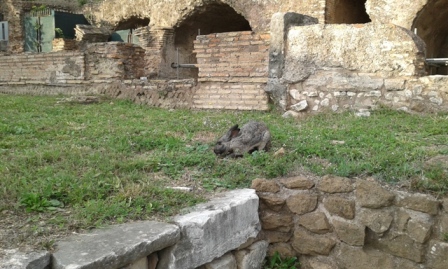The Imperial Fora, are one of the main legs for those who come to Rome for the first time also because they are near the Colosseum. Their history is particular, indeed. At the beginning, between the IX and the X century a.C., the Imperial Fora area, was a marsh used to bury the first inhabitatans of Rome who lived where now are Campidoglio and Palatino.

Then Tarquinio il Superbo, built the Cloaca Maxima, that is to say the largest sewer in Rome which still works, and drained the marsh. So this place, called Roman Forum, became the center of the political, religious and economical life. During the centuries new buildings were added, the older were pulled down, new churches were built, etc. Afterwards Julius Caesar and the following Emperors, built other five Fora near the more ancient Roman Forum: Foro di Cesare, Foro di Augusto, Foro della Pace, Foro di Nerva and Foro di Traiano. They are just the Imperial Fora, different from Roman Forum.

You could pass from one to another through porticos and colonnades and this was an extraordinary building work. Then, during the Middle Age, this area was buried by the soil and the vegetation until the Renaissance, when Julius II wanted the Fora to be used as a marble quarry to renovate the Roman buildings. The area was again a crossing place for people and a grazing ground: only ruins remained. The ruins that today are photographed by tourists. However tourists photograph very much also another particular thing: the rabbits which live on the upper side of the Fora.

From 22 April to 30 October 2016 you can make a travel in Ancient Rome through 2 routes of Imperial Fora .

Leave a Reply